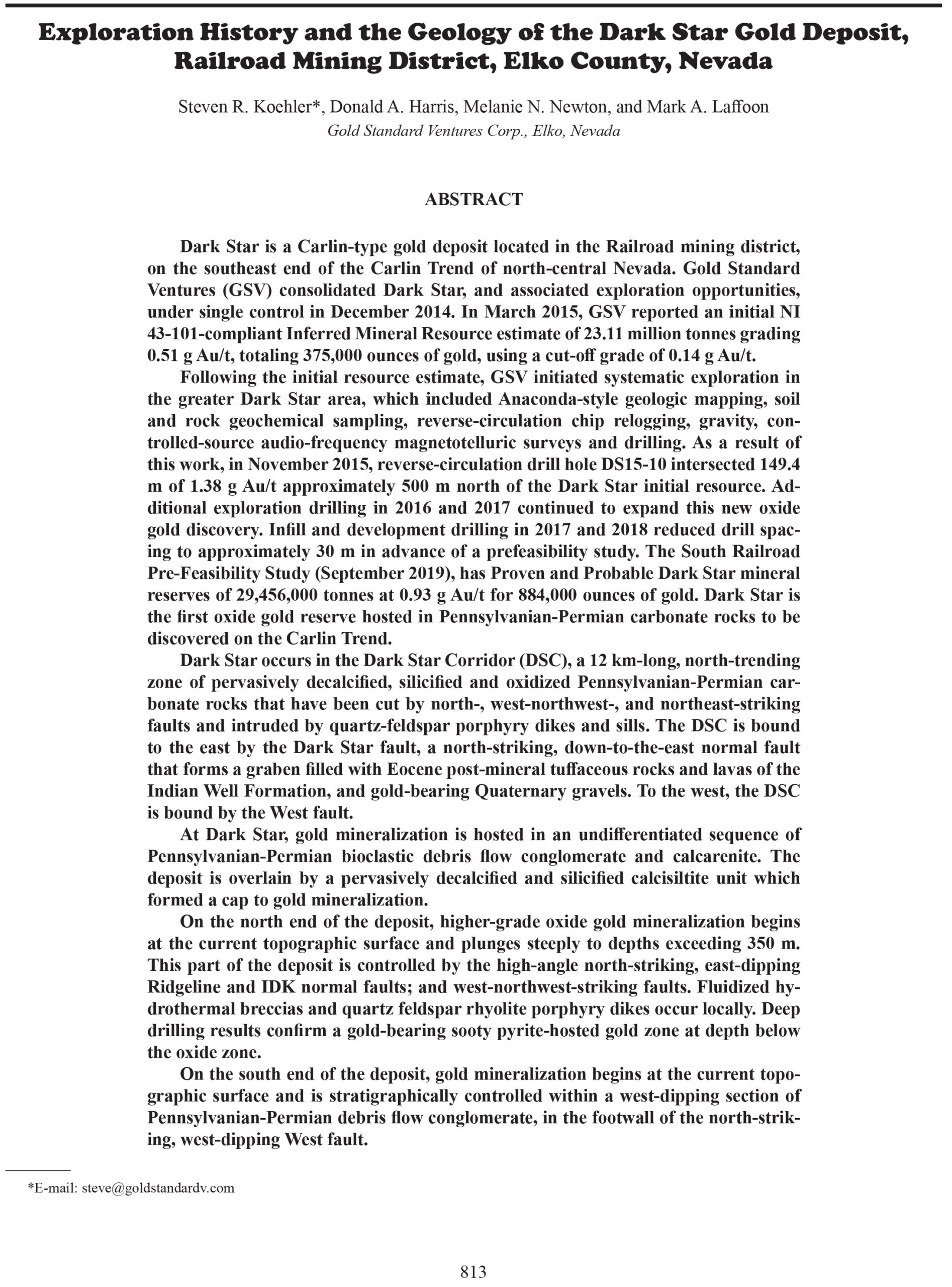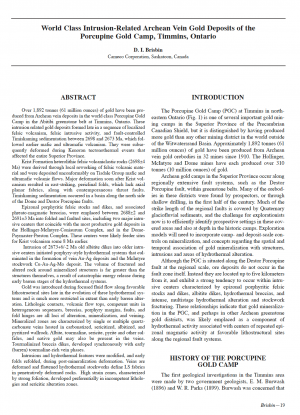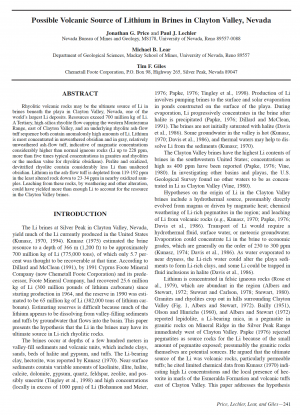Description
Dark Star is a Carlin-type gold deposit located in the Railroad mining district,
on the southeast end of the Carlin Trend of north-central Nevada. Gold Standard
Ventures (GSV) consolidated Dark Star, and associated exploration opportunities,
under single control in December 2014. In March 2015, GSV reported an initial NI
43-101-compliant Inferred Mineral Resource estimate of 23.11 million tonnes grading
0.51 g Au/t, totaling 375,000 ounces of gold, using a cut-off grade of 0.14 g Au/t.
Following the initial resource estimate, GSV initiated systematic exploration in
the greater Dark Star area, which included Anaconda-style geologic mapping, soil
and rock geochemical sampling, reverse-circulation chip relogging, gravity, controlled-source audio-frequency magnetotelluric surveys and drilling. As a result of
this work, in November 2015, reverse-circulation drill hole DS15-10 intersected 149.4
m of 1.38 g Au/t approximately 500 m north of the Dark Star initial resource. Additional exploration drilling in 2016 and 2017 continued to expand this new oxide
gold discovery. Infill and development drilling in 2017 and 2018 reduced drill spacing to approximately 30 m in advance of a prefeasibility study. The South Railroad
Pre-Feasibility Study (September 2019), has Proven and Probable Dark Star mineral
reserves of 29,456,000 tonnes at 0.93 g Au/t for 884,000 ounces of gold. Dark Star is
the first oxide gold reserve hosted in Pennsylvanian-Permian carbonate rocks to be
discovered on the Carlin Trend.
Dark Star occurs in the Dark Star Corridor (DSC), a 12 km-long, north-trending
zone of pervasively decalcified, silicified and oxidized Pennsylvanian-Permian carbonate rocks that have been cut by north-, west-northwest-, and northeast-striking
faults and intruded by quartz-feldspar porphyry dikes and sills. The DSC is bound
to the east by the Dark Star fault, a north-striking, down-to-the-east normal fault
that forms a graben filled with Eocene post-mineral tuffaceous rocks and lavas of the
Indian Well Formation, and gold-bearing Quaternary gravels. To the west, the DSC
is bound by the West fault.
At Dark Star, gold mineralization is hosted in an undifferentiated sequence of
Pennsylvanian-Permian bioclastic debris flow conglomerate and calcarenite. The
deposit is overlain by a pervasively decalcified and silicified calcisiltite unit which
formed a cap to gold mineralization.
On the north end of the deposit, higher-grade oxide gold mineralization begins
at the current topographic surface and plunges steeply to depths exceeding 350 m.
This part of the deposit is controlled by the high-angle north-striking, east-dipping
Ridgeline and IDK normal faults; and west-northwest-striking faults. Fluidized hydrothermal breccias and quartz feldspar rhyolite porphyry dikes occur locally. Deep
drilling results confirm a gold-bearing sooty pyrite-hosted gold zone at depth below
the oxide zone.
On the south end of the deposit, gold mineralization begins at the current topographic surface and is stratigraphically controlled within a west-dipping section of
Pennsylvanian-Permian debris flow conglomerate, in the footwall of the north-striking, west-dipping West fault.
Alteration at Dark Star includes variable amounts of decalcification, silicification, and late vertically-extensive limonite, goethite and hematite oxidation, lesser
amounts of clays developed on fractures, quartz stringers and barite. Sooty iron sulfide minerals occur at depth under the oxidized rocks. Elevated concentrations of
arsenic, mercury, thallium and antimony are associated with the deposit





